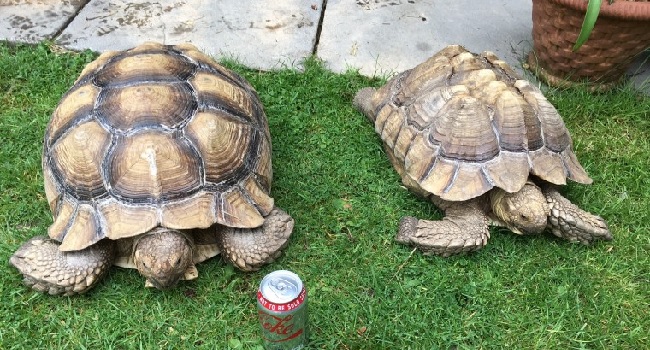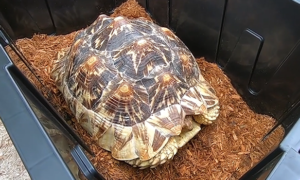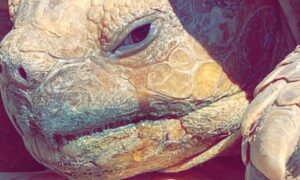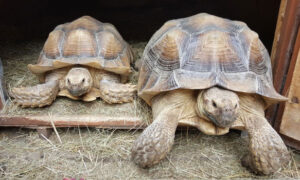Sulcata tortoises are popular pet tortoises because of their large size. They’re not known for bright vibrant colors, like red foot tortoises are. Sulcatas are known for their size and outgoing personalities. However, there are some color differences within sulcata tortoises.
Standard Sulcata Tortoise
Your average sulcata tortoise will be shades of tan and brown. The scutes are often a lighter tan, whereas the grown lines may appear a darker brown.
- Baby Sulcata Tortoises: Sulcata tortoises are born with a light-colored shell, often a pale yellow or tan.
- Young Sulcata Tortoises: Juvenile sulcatas may have brighter colors that can gradually evolve as they mature.
- Adult Sulcata Tortoises: As they age, the shells tend to darken, and adults typically have a dark brown or tan shell with a unique pattern of growth rings.
Potential Sulcata Tortoise Colors:
The standard color of Sulcata tortoises is neutral for a more natural coloration that would blend into their native environment. However, there are a few differences in sulcata tortoise colors.
High-Color Sulcatas: Some Sulcata tortoises are considered “high-color” becuase they exhibiting a more intense and vibrant shell color compared to the standard. The shell of a high-color Sulcata may have deep, rusty oranges or rich browns. It’s thought that these high color variations are caused by genetic, diet or environmental conditions.
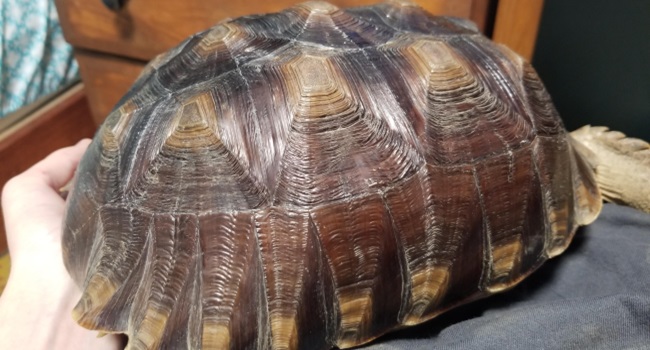
Albino Sulcatas: Albino sulcata tortoises lack melanin and have a pale yellow shell that may darken as the tortoise ages, however it will never become brown. An albino sulcata may become an almost golden color as an adult. Albino sulcata tortoises have red eyes, which is the main differentiator between albino and ivory sulcatas.
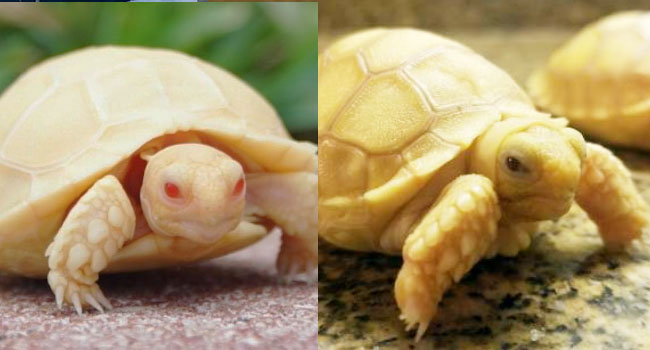
Ivory Sulcatas: Ivory sulcata tortoises (sometimes called pearl sulcatas) have a rare leucistic gene. In order to produce an ivory sulcata, you need to have two parents with the gene. Ivory sulcatas do not fully lack melanin, they merely have a partial loss of pigmentation, leading to partial or patchy coloration.
Pattern and Marking Differences: In addition to variations in overall color, some Sulcata tortoises may have unique patterns or markings on their shells. These patterns can include irregularities in the sulci (furrows) or markings vary from the typical mottled appearance.
Factors That Can Influence Sulcata Color Variations:
Although, it isn’t necessarily 100% known, there are several factors that are thought to influence sulcata tortoise colors.
- Genetics: Genetic factors are the most obvious factor that can play a significant role in determining the coloration of Sulcata tortoises. The presence of specific genes or mutations can influence the pigment of the shell. Albino and ivory sulcatas are examples of genetic influences on color.
- Diet: The diet of Sulcata tortoises is a crucial factor in their overall health and coloration. Sulcatas should eat primarily grasses and hays, however a diet that includes excess foods like spinach, kale, and other foods that are high in carotenoids is thought to enhance color. Although, this diet would not be healthy or advisable for a sulcata, as it would contain excess fruits and vegetables.
- Environmental Conditions: The environment in which Sulcata tortoises are raised has a direct impact on their coloration. Exposure to natural sunlight is essential for the synthesis of vitamin D, which is crucial for overall health, including shell development. It’s thought that during summer months, tortoises may lighten due to higher sun exposure.
- Age: As Sulcata tortoises age, their coloration may change. Younger individuals often display brighter colors, which can evolve as they mature.

